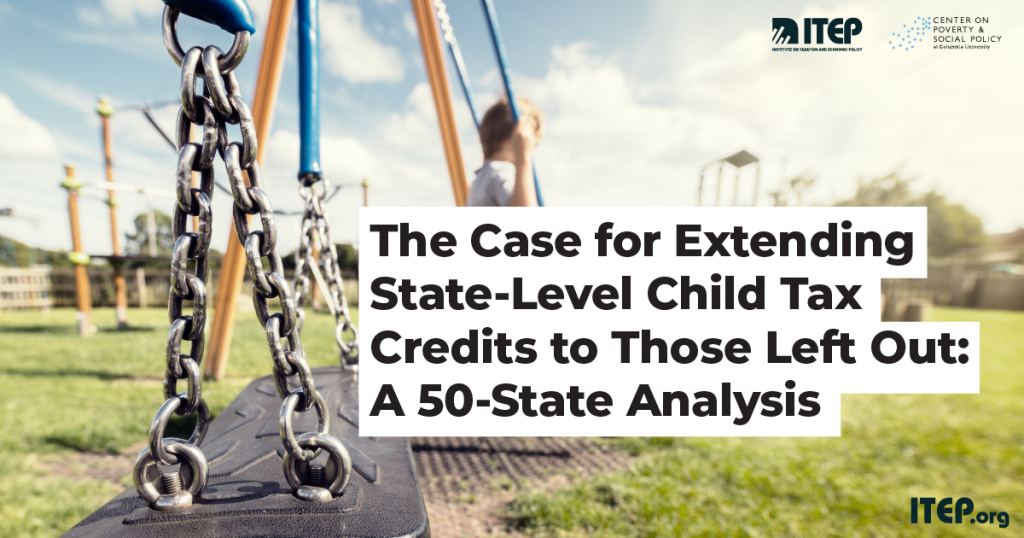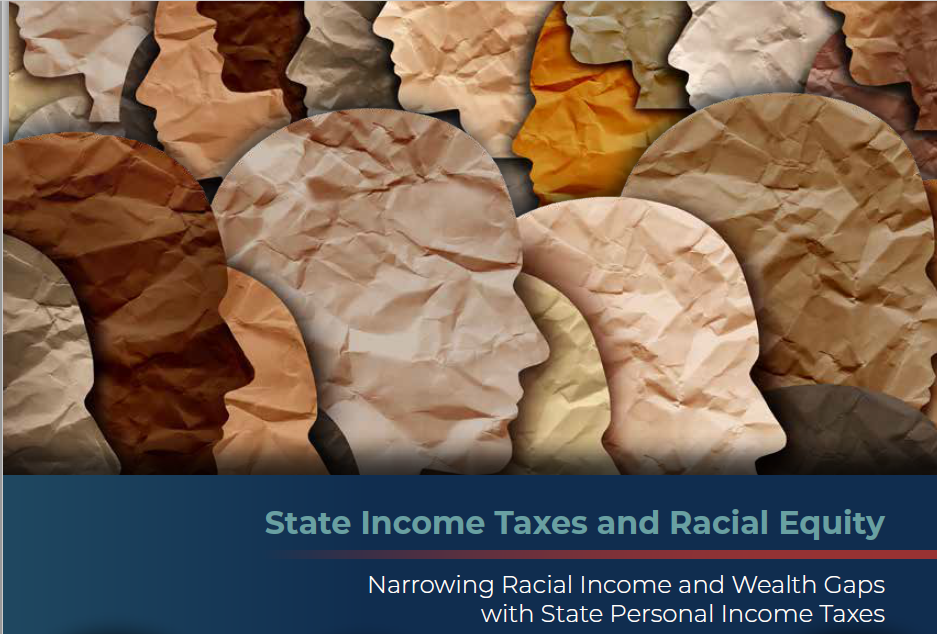Child Tax Credits (CTCs) are a highly effective tool that states can employ to bolster the economic security of low- and middle-income families and position the next generation for success. When designed well, they can also help to counteract some of the deficiencies in the federal CTC and lead to meaningful reductions in child poverty and deep poverty.[1] As a growing number of states are offering and considering CTCs, state lawmakers should pay attention to how these policies are designed.
Child Tax Credits: A Critical Tool to Help Families Make Ends Meet
Child Tax Credits boost the after-tax incomes of qualifying families and offset some of the cost of raising children. For families with lower incomes, these policies are especially important for economic security and stability. They help families avert unexpected hardship that can threaten basics like housing, food and utilities. Child Tax Credits are associated with reduced poverty, higher financial and household stability, improved child and maternal health, students’ educational achievement, children’s future economic outcomes and more.[2] These benefits are contingent on the design of the credit.
CTCs boost the after-tax incomes and economic security of a diverse group of families but, when designed well, can be particularly important for Black, Hispanic, Indigenous, and other people of color confronting economic hardship created by systematic racism.[3]
Rising economic inequality, stagnating wages and child poverty are defining challenges in our country today. The federal CTC – particularly the expanded version in place in 2021 – has incredible potential to address these challenges.
The federal CTC currently provides a credit of up to $2,000 per child. It is available to families with dependent children in the home under the age of 17 and phases out for married couples with incomes above $400,000 and for unmarried parents with incomes exceeding $200,000.
The federal CTC currently limits low-income families from receiving the full benefit of the credit. This is due to an earnings requirement and lack of full refundability for families with low incomes. Children whose parents or guardians have less than $2,500 in earnings are ineligible for the federal CTC while families with earnings above this level receive a federal CTC limited to 15 percent of each dollar of earnings over $2,500 (until reaching a maximum credit of $2,000 per child). The CTC is also only partially refundable, meaning that families can only receive $1,500 per child in the form of a tax refund. In effect, the current CTC has a trapezoid-like structure where some families are too poor to receive any credit, some fall within the phase-in range, some benefit from the full credit, some fall within the phase-out range and some families earn too much to receive the credit.
Under the American Rescue Plan Act of 2021 (ARPA), the credit was temporarily expanded—for 2021 only—to $3,000 for older children and $3,600 for children under 5. It was reformed to allow monthly credit payments rather than one annual lump sum. And it was reworked to reach more children, including nearly one-third of children who live in families too poor to qualify for the credit under permanent law. Absent federal action, 24 percent of white children, 45 percent of Black children and 42 percent of Hispanic children will not receive the full credit in 2023 due to limits that prohibit lower-income families from accessing the credit either in full or in part.[4]
Since its enactment in the late 1990s, the federal CTC has grown and changed. For instance, under the Tax Cuts and Jobs Act of 2017 (TCJA), the credit rose from $1,000 to $2,000 per child through 2025, was reshaped to allow more affluent families to claim it and was written to exclude immigrant children without Social Security Numbers.[5] Prior to the TCJA, all children whose parents met the income eligibility requirements, regardless of citizenship status, received the federal version of the credit.
This expanded version of the federal CTC in 2021 was wildly successful in reducing child poverty, cutting it by more than 40 percent by lifting 3.7 million children out of poverty before it was allowed to lapse in 2022.[6] In the absence of federal action to reinstate those reforms, state lawmakers are increasingly adopting state-level CTCs to boost income and opportunities for children and families in their states.
More States Adopting and Expanding Child Tax Credits
After years of being limited in reach, there is increasing momentum at the state level to adopt and expand CTCs. Today ten states are lifting the household incomes of families with children through yearly multi-million-dollar investments in the form of targeted, and usually refundable, Child Tax Credits.
This year alone, lawmakers in three states – New Mexico, New Jersey and Vermont – created new CTCs while California policymakers meaningfully enhanced an existing credit. These new and expanded credits are all permanent with the exception of New Mexico’s credit, which is scheduled to expire in 2027.
▶ Vermont’s CTC provides a maximum benefit of $1,000 per child while New Jersey’s credit provides a maximum benefit of $500 per child, and both are limited to children under the age of 6. New Mexico’s credit provides a maximum benefit of $175 for each child under the age of 17. Each of these new CTCs is tailored toward low- and middle-income earners through phase-outs that reduce the size of the credit as household earnings rise.
▶ In California, those who qualify for the CalEITC – the state’s Earned Income Tax Credit – and have a child under the age of 6 may also qualify for the Young Child Tax Credit.[7] This year lawmakers expanded the credit to provide up to $1,000 per qualifying family regardless of work earnings; this cap will be adjusted annually for inflation to keep up with rising prices.
Shorter-term credits and rebates targeted toward children were also enacted in a handful of states this year. Policymakers in Connecticut and Rhode Island offered one-time tax rebates to children from low- and middle-income families in their states, and in New York they enacted a one-year increase to the state’s Empire State Child Credit.
Three states - Colorado, Oklahoma and New York - have credits directly tied to some version of the federal Child Tax Credit.
▶ In 2021 Colorado lawmakers approved the funding needed to implement a refundable, income-limited credit for children under 6 tied to the federal CTC. The credit will be available to qualifying children beginning January 2023.
▶ Oklahoma offers families a choice between a nonrefundable credit worth 5 percent of the federal CTC or a nonrefundable credit worth 20 percent of the federal Child and Dependent Care Tax Credit. The state limits the credit to taxpayers with incomes under $100,000. But much like the federal CTC as it exists today, the state credit remains limited in its ability to reach families in or on the verge of poverty. This is because the Oklahoma credit is nonrefundable, meaning that it cannot be used by lower-income families who may have little state income tax liability but who pay substantial amounts of sales, excise, and property taxes.
▶ New York has a refundable credit worth $100 per qualifying child or 33 percent of the taxpayer’s allowable federal credit, whichever is greater. Lawmakers in New York opted to decouple their state credit (the Empire State Child Credit) from changes to the federal CTC occurring after 2017, so they continue to maintain a maximum credit of $330 (that is, 33 percent of the $1,000 maximum federal credit in place before TCJA) along with other pre-TCJA tax parameters. New York’s credit is not available to children under the age of 4 – a problematic limitation that diminishes the credit’s ability to foster economic security in children’s earliest years.
In 2019, Massachusetts transformed two separate deductions into refundable credits. The Household Dependent Tax Credit replaced the state’s deduction for household dependents and now provides $180 per dependent and $360 for two or more dependents. Dependents in this case include a broad set of people: child dependents, senior dependents and dependents with disabilities. People can choose between this Household Dependent Care Tax Credit or the Dependent Care Tax Credit but cannot take both. These credits are available on top of the state’s existing dependent exemption.
Other states have policies that resemble CTCs but are either far less robust or best thought of as state CTCs in name only.
▶ In 2018, Idaho and Maine added nonrefundable dependent credits to their tax codes to replace personal exemptions they allowed to lapse. In practice, exemptions directly reduce taxpayer income while a credit reduces tax liability. Each of these dependent credits would be stronger if they were available on top of existing dependent exemptions or if they were made substantially larger (and refundable) to account for the fact that dependent exemptions are absent in these states. Colorado also lacks a separate dependent exemption.
▶ California also offers personal credits (via the California Dependent Exemption Credit) in the place of exemptions, yet this is in addition to the state’s Young Child Tax Credit. These credits are broadly comparable to dependent exemptions that are offered in most states.
▶ And in Maryland, lawmakers in 2021 passed a modest, temporary Child Tax Credit that is limited to children with disabilities. It requires taxpayer adjusted gross income (AGI) be less than $6,000 and is set to expire in January 2023. The credit offers an excellent starting point for a more robust state-level CTC but for now remains extremely limited in its reach.
States Should Design Child Tax Credits with Equity in Mind
The lapsing of 2021's federal Child Tax Credit enhancements was a catalyst for state action in 2022 and could remain one going forward. In the absence of additional action by Congress, and to best support families with children, states have several options to strengthen economic security and child well-being through new or expanded CTCs. Lawmakers should approach the design of these state CTCs with an eye toward equity by ensuring that the credit reaches as many low- and moderate-income children as possible.
1. Ideally, lawmakers should create standalone refundable CTCs that would ensure that all children - regardless of their family’s employment or immigration status - could benefit. The advantage of implementing a credit separate from the federal CTC is that states can avoid the shortcomings of the federal credit (particularly the earnings requirement and lack of full refundability) that keep many lower-income families from receiving the full benefit. Instead, states can use the flexibility they have to determine the scope and scale of their credits without these onerous restrictions.
That flexibility allows state lawmakers to:
• Make the credit fully refundable. Refundability is key to the CTC’s success, especially at the state level. If a credit is refundable, taxpayers receive a refund for the portion of the credit that exceeds their income tax bill. Refundable credits can therefore help offset all taxes paid, not just income taxes, helping mitigate some of the regressive effects of state and local sales, excise, and property taxes.
• Not include a requirement for earnings. All children, regardless of the amount of income their parents bring in per year, should benefit from a robust state CTC.
• Set a maximum credit amount per child, rather than per household, to not penalize children in larger families. Lawmakers should also provide a more robust credit to younger children in their formative years when an income boost may be most beneficial.
• Set state-specific phase-out ranges that can better target the credit to low- and middle-income families. Setting a lower phase-out range than the federal range ensures the credit can more effectively reach families in need while dramatically reducing the cost. States with Earned Income Tax Credits could consider using their EITC phase-outs as a way to tightly target a state CTC.
• Index the credit to inflation so that it does not erode over time. Whether and how policies are indexed for inflation has major implications for their power to improve economic well-being and reduce poverty in the long run.[8]
• Make the credit available on an advanced or monthly basis. Research has shown that monthly cash payments reduce poverty and keep it low year-round. This approach provides families the flexibility to respond to their financial needs in real-time and catch up on debt incurred in months when cash on hand was limited.[9]
2. Lawmakers could enact a CTC as a percentage of the federal credit in combination with a minimum credit. Like the approach that most states take with their Earned Income Tax Credits, states can also piggyback their CTCs on top of federal rules at a flat percentage rate. For example, a state CTC calculated as 10 percent of the federal CTC would amount to a $200 state credit for any child who fully receives it. Under this approach, however, state lawmakers should not to amplify the worst features of federal law. It is important that they ensure children in families too poor to receive the full benefit of the federal credit are not denied the full state benefit and establish a minimum, refundable benefit of $200 per child for lower-income families.
This option would still rely upon the federal CTC’s high phaseout range through 2025 (starting at $400,000 for married parents and guardians, $200,00 for single parents and guardians)—providing more sweeping tax cuts to families throughout the income distribution at a relatively high cost to state coffers. Decoupling from federal law in favor of a standalone CTC benefit, as described above, would allow states to implement their own, likely lower phase-out ranges.
3. Lawmakers could fill the gap for children left behind by the federal CTC. State lawmakers can make up for the shortcomings of the federal CTC by ensuring that children in families too poor to receive the full benefit of the credit are brought up to the full $2,000 credit, or at least to some portion of that amount. This approach ensures that a state’s lowest-income children are not left behind. Of these three options, this is the most carefully tailored to reach only those families in the most vulnerable economic circumstances. As a result of its narrower reach, this option could also have a smaller effect on state revenues than the other proposals described above, which may be appealing to lawmakers concerned about the budgetary impact of more expansive CTC proposals.
Under any of these options, states should explore monthly payments rather than, or in addition to, annual payments. Recent federal experience suggests that this approach can meaningfully reduce child poverty, greatly improve economic security and help ensure that children have critical resources, such as groceries, housing and clothing.[10]
The approaches under options two and three would fail to bring in non-citizen children unless state lawmakers took additional action. Many of these children’s parents are undocumented immigrants, or filers using Individual Taxpayer Identification Numbers (ITINs) who live, work and pay taxes in the United States. This population is too often specifically left behind by federal and state policies. There is more that lawmakers can do to ensure that these filers, who would otherwise meet eligibility criteria, are not denied access.[11]
Appendix
Endnotes
[1] Davis, Aidan, et al., The Case for Extending State-Level Child Tax Credits to Those Left Out: A 50-State Analysis. Institute on Taxation and Economic Policy and Center on Poverty and Social Policy at Columbia University, April 17, 2019. https://itep.org/the-case-for-extending-state-level-child-tax-credits-to-those-left-out-a-50-state-analysis/
[2] Waxman, Samantha, et al., Income Support Associated With Improved Health Outcomes for Children, Many Studies Show: Refundable Tax Credits Among Programs that Boost Income. Center on Budget and Policy Priorities, May 27, 2021. https://www.cbpp.org/research/federal-tax/income-support-associated-with-improved-health-outcomes-for-children-many. Hardy, Bradley L., Child Tax Credit Has a Critical Role in Helping Families Maintain Economic Stability. Center on Budget and Policy Priorities, April 14, 2022. https://www.cbpp.org/research/federal-tax/child-tax-credit-has-a-critical-role-in-helping-families-maintain-economic
[3] Davis, Carl, et al. State Income Taxes and Racial Equity: Narrowing Racial Income and Wealth Gaps with State Personal Income Taxes. Institute on Taxation and Economic Policy, October 4, 2021. https://itep.org/state-income-taxes-and-racial-equity/
[4] Wamhoff, Steve, et al. National and State-by-State Estimates of Two Approaches to Expanding the Child Tax Credit. Institute on Taxation and Economic Policy, September 7, 2022. https://itep.org/romney-child-tax-credit-leaves-many-families-worse-off/
[5] Guzman, Marco. “Inclusive Child Tax Credit Reform Would Restore Benefit to 1 Million Young ‘Dreamers’.” Institute on Taxation and Economic Policy. April 27, 2021. https://itep.org/inclusive-child-tax-credit-reform-would-restore-benefit-to-1-million-young-dreamers/
[6] Parolin, Zachary, et al. Absence of Monthly Child Tax Credit Leads to 3.7 Million More Children in Poverty in January 2022. Center on Poverty and Social Policy at Columbia University, February 17, 2022. https://www.povertycenter.columbia.edu/publication/monthly-poverty-january-2022
[7] Burns, Kalee, et al., “Child Poverty Fell to Record Low 5.2% in 2021: Expansions to Child Tax Credit Contributed to 46% Decline in Child Poverty Since 2020.” United State Census Bureau, September 13, 2022. https://www.census.gov/library/stories/2022/09/record-drop-in-child-poverty.html
[8] Davis, Aidan. Boosting Incomes and Improving Tax Equity with State Earned Income Tax Credits in 2022. Institute on Taxation and Economic Policy. September 15, 2022. https://itep.org/boosting-incomes-and-improving-tax-equity-with-state-earned-income-tax-credits-2022/
[9] Collyer, Sophie, et al., Keeping up with Inflation: How Policy Indexation Can Enhance Poverty Reduction. The Century Foundation, August 25, 2022. https://tcf.org/content/report/keeping-up-with-inflation-how-policy-indexation-can-enhance-poverty-reduction/ and Grundman O’Neill, Dylan. Indexing Income Taxes for Inflation: Why It Matters. Institute on Taxation and Economic Policy, August 22, 2016. https://itep.org/indexing-income-taxes-for-inflation-why-it-matters-1/
[10] Hamilton, Christal, et. al. Monthly Cash Payments Reduce Spells of Poverty Across the Year. Center on Poverty and Social Policy at Columbia University, May 9, 2022. https://www.povertycenter.columbia.edu/publication/monthly-cash-payments-reduce-poverty-spells
[11] “Most Common Uses of 2021 Child Tax Credit Payments: Food, Utilities, Housing, Clothes.” The Annie Casey Foundation Kids Count Data Center, March 22, 2022. https://datacenter.kidscount.org/updates/show/294-child-tax-credit-payments
[12] Sifre, Emma. “ITIN Filer Data Gap: How Changing Laws, Lack of Data Disaggregation Limit Inclusive Tax Policy.” Institute on Taxation and Economic Policy, June 17, 2021. https://itep.org/itin-filer-data-gap-how-changing-laws-lack-of-data-disaggregation-limit-inclusive-tax-policy/





